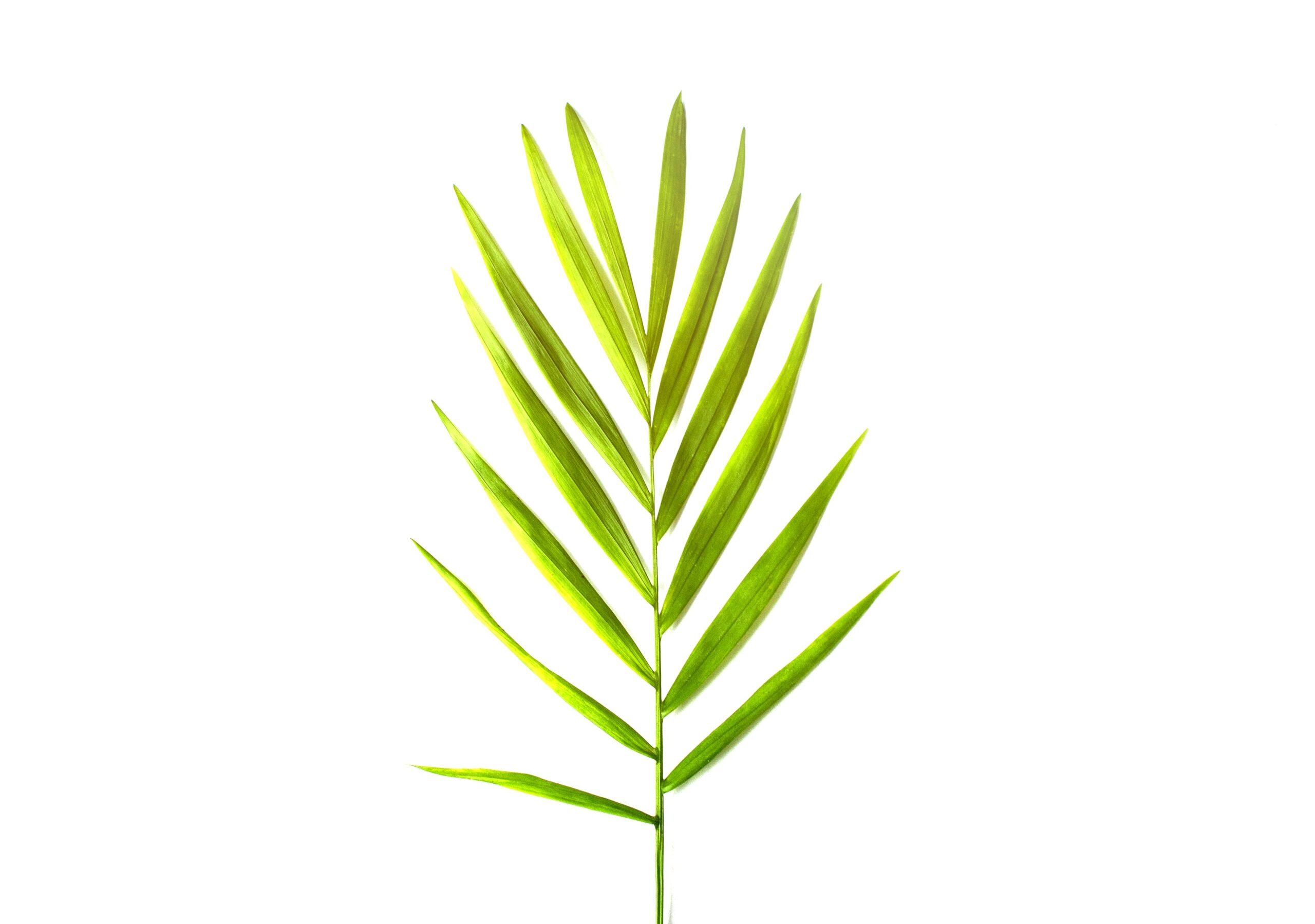

The palms are common enough that they are not too demanding. These large tropical plants come in different shapes and sizes, but they all have one thing in common: their leaves. Or rather (and as your nerdy friends prefer to call them), their foreheads. If you’ve ever wondered what palm fronds are, or even what you can do with them, you’ve come to the right place for more information.
Palmfront
According to Mr. Hunker, there are four basic types of flippers: Palm fronds, palm leaves, whole shells and fronds. Regardless of the type, they all take 3 to 5 years to mature. When a brother dies, another brother takes his place. Some palms are self-cleaning and naturally get rid of their old fronds; others hang on to them until someone comes to free them. Some fronds grow at the base of the palm, others in bunches at the top. Some fronts are edible, some are not. Sometimes the edge of the palm is only a few inches wide, other times it reaches the size of an adult male. The forehead may be brown, but it is usually waxy green. In fact, the palm tree can be anything. But whatever their length, color or outline, all palm leaves raise the same eternal question: What exactly do you do with them?
Use of palm fronds
Palm branches can fall at the slightest breeze and those lucky enough to have a few trees are under a constant deluge. It’s a big job to get rid of them. Leaving them to rot is unattractive. So, what exactly are you supposed to do with it? Fortunately, palm leaves are very useful. The next time you have a bargain, consider using it with one of these practical suggestions.
Windscreen
Tie a few slings around the fence, plant it in the ground and voila! Natural windbreak. For most needs, a three- to four-foot structure is sufficient, but if you are experiencing particularly strong winds, use many fronts to make the structure as thick as possible.
Roof step
Palm leaf roofs are incredibly easy to make, even for those with little or no craft skills. To build a roof, just attach a siding to a wooden structure, and you’re done. Unless you live in a tropical paradise, it’s not a good idea to try to cover your real house with straw like this. However, if you are looking for an eco-friendly and affordable roof for a chicken coop, gazebo or even a compost bin, this is an ideal option.
Garden mulch
Palm branches provide an excellent mulch base. Simply shred them with a mulcher or lawnmower and then use the results as feed for your lawn, roses or vegetables. It’s very simple!
Color Mixer
Sometimes the strangest suggestions are also the smartest. According to Rootsimple.com, palm leaves are an excellent medium to stir paint with if you have a pot of paint, but nothing to stir with. Try it yourself: You should never go back to conventional agitators.
Garden fence
Permaculturenews.org has an excellent suggestion for getting rid of all those palm fronds: Make it a garden fence. Natural, sustainable, biodegradable and, most importantly, completely self-contained, a palm tree fence is a great way to raise chickens, dogs, cats and other pets, as well as other less desirable creatures. You may not think that a few leaves are an effective barrier, but you’d be surprised how impenetrable the fronts can be. If you are building a temporary structure, make sure you keep the thickest part of the backbone in front of the posts.
Woven baskets
If you love arts and crafts, why not try a basket of palm trees? Basket weaving of palm leaves is a common practice in Belize, and the results can be spectacular. Although palm fronds may seem difficult to work with, they are in fact surprisingly malleable, making them a material of choice for working with. It may take some practice, but with time and patience you will soon be able to make all your own shopping carts from scratch. And why would you stop there? Hats, bags, backpacks, trash cans…. the possibilities are endless.
inserts
If you’re a passionate gardener, you know the value of a solid and robust offering. If you’re an amateur vampire killer, you know that too. Whether you’re afraid of toothed leeches or wilted roses, a few palm frond stakes are a great addition to your arsenal. Strong enough to support tomatoes, cucumbers, beans, etc., and every greenhouse should have several. Best of all, it’s pretty easy to get rid of them when they’ve lost their vigor: just shred and throw them into the beds to make mulch.
Ignition
If you have more fronts than you use, there is one thing you always get rid of: Fire! Fire! If you have a gas stove, palm fronds are a sustainable source of clean-burning biomass. Simply remove the foliage before breaking the slices into pieces. Larger pieces can be dried and stored, while smaller pieces can be used as effective rocket fuel.
Animal feed
If you have cattle, sheep or other types of livestock, you may want to consider using slings as feed. A California company, Palm Village, is so convinced of the benefits of palm leaves that it has turned them into a business. After drying and sanding the fronts, the company mixes them with dates to make a natural food. According to the LA Times, palm owner and grower Jim Parks got the idea after seeing cows nibbling on palm fronds. Palm Silage currently has its own milling facility in Phoenix and a second base in Thermal, near Coachella. But Parks has no intention of stopping there. He believes that this process can be a lifeline for poor farmers around the world, allowing them to turn otherwise useless palm fronds into a healthy, nutritious, and most importantly, inexpensive source of food for livestock.
Related Tags:
what is palm fronds, how to make things out of palm leaves, how to dispose of palm tree fronds, what to do with dead palm leaves, how do you get rid of palm fronds, parts of a palm frond, palm fronds uses, palm frond crafts







